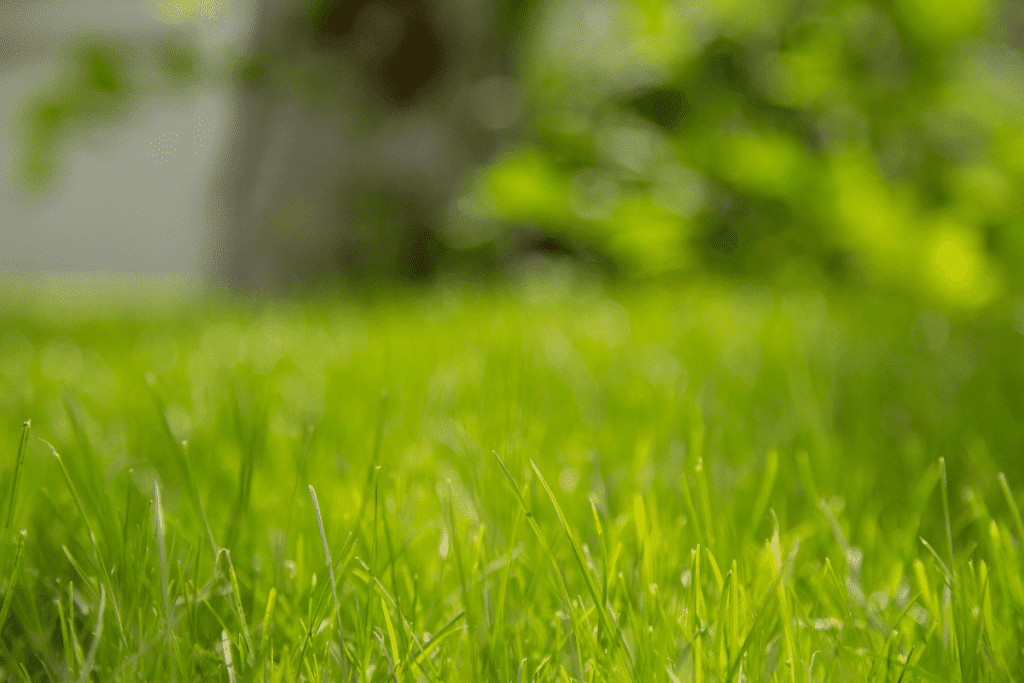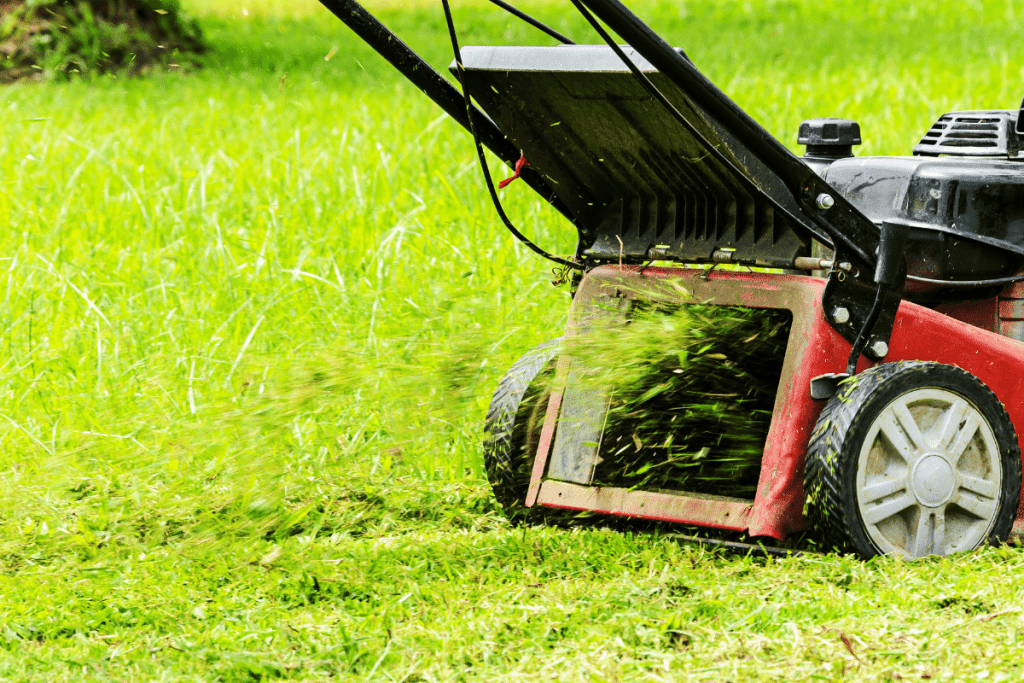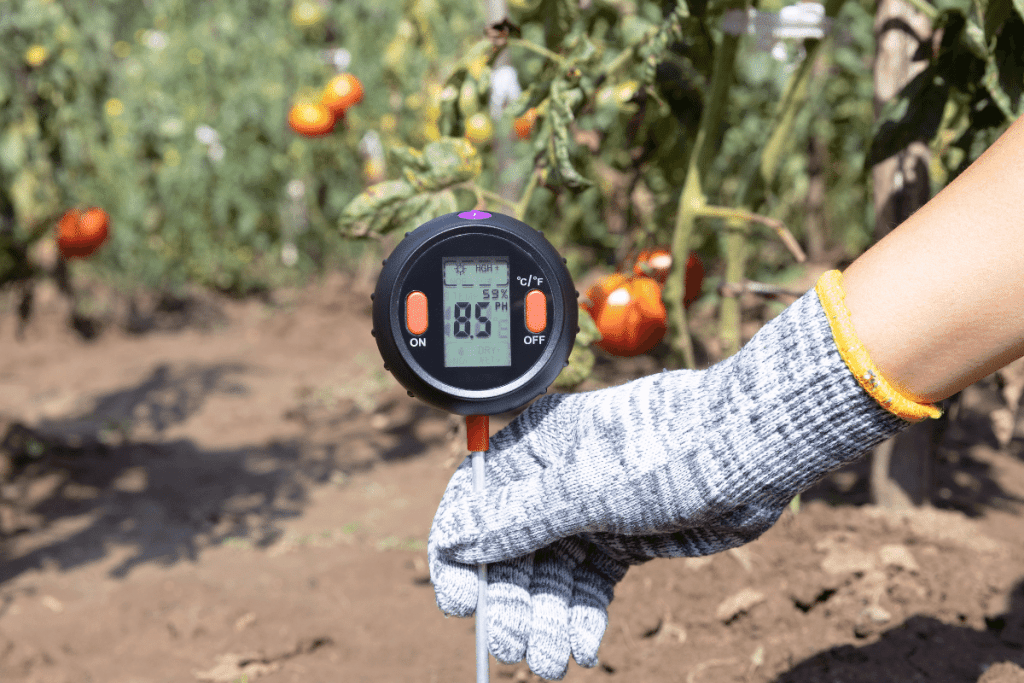Bermuda grass is one of the most common types of grass in the southern US.
Initially used in golf courses for its ability to tolerate heavy foot traffic and lots of sunlight, it quickly became incredibly popular amongst homeowners, too!
Although it’s a bit higher-maintenance than other types of grasses, it looks healthy, green, and thick with the right amount of care.
If you’re looking for methods to make your bermuda grass look lusher than ever, consider some of these methods below.

Table of Contents
Use The Right Kind Of Fertilizer
With so many different types of fertilizer on the market, it’s often difficult to choose the right type for your specific lawn.
For most bermuda grass lawns, a 16-4-8 fertilizer is usually just the right amount of nutrients.
The ratio simply refers to the amount of nitrogen, phosphorus, and potassium in the fertilizer, respectively.
While it’s a good idea to also do a soil test to check your lawn’s exact levels of each nutrient, bermuda grass generally needs a high amount of nitrogen to thrive.
We highly recommend something like Simple Lawn Solutions’ Advanced 16-4-8 Balanced NPK Liquid Fertilizer.
Additionally, be sure to fertilize in the spring or early summer if possible, as this is the active growing season for bermuda grass.
In addition to encouraging your lawn to grow thicker and greener, a nitrogen-heavy fertilizer will also help your bermuda grass spread faster and cover any sparse areas of your yard.
For more options, check out our list of the best fertilizers for bermuda grass.
Aerate Your Lawn Twice A Year
There are a few different types of aeration, and certain types work better for different lawns.
For bermuda grass with hard-packed soil, core aeration and spike aeration are both very effective.
Aerating your lawn both increases the airflow to your grass’ roots and loosens up compacted soil, which in turn allows nutrients and water to more efficiently promote your lawn’s vertical and horizontal growth.
Core aeration involves pressing a hollowed-out tube a few inches into the soil and removing small “cores” of soil and thatch.
After pressing the tubes about 2 to 3″ inches into the soil, you remove them and deposit the cores onto the lawn’s surface.
There are many different ways to accomplish core aeration, from using a tool to do it by hand (which is inexpensive yet tedious) to using a more elaborate machine aerator (which is more expensive yet a lot faster and less labor-intensive).
Spike aeration is sort of similar to core aeration, but instead of removing large cores of soil, you’re just pushing smaller, more narrow spikes into the ground.
Spike aerator tools also run the gamut, from manual hand tools, which look sort of like pitchforks (or even shoes with spikes on the bottom of them.
With this, you’re able to aerate your lawn while walking across it!) to more efficient tools designed to be dragged behind a riding mower or pushed across your lawn.
Each type has its pros and cons; while core aeration is very effective, it’s also more costly and requires more labor.
On the other hand, while spike aerators are accessible and inexpensive, they aren’t quite as effective as core aerators.
Regardless of which you choose, be sure to aerate at least once or twice a year for a thicker lawn.
Mow Lower Than 1.5″ Inches, And Mow Often!

Bermuda grass grows and spreads quickly, so it needs to be mowed a bit more often than most other common types of grass.
However, if you’re having problems getting bermuda to grow as quickly as it should be check out our post on tips to get bermuda grass to spread quicker.
Frequent mowing, or at least once a week, and keeping your mowing height low (just below 1.5″ inches in height) is ideal for encouraging your grass lawn to grow in as thick and healthy as possible.
Additionally, avoid mowing your lawn when it is extremely dry, but it also shouldn’t be very wet, either.
It’s a good idea to get in the habit of watering right after you mow (and as early in the day as possible) to encourage thick, green growth.
Mowing and then watering early in the morning will also prevent your lawn from drying out too quickly and keep it from developing mildew and various types of lawn fungi.
Whenever possible, mow just before decently heavy rain is scheduled to occur so you don’t even have to water afterward!
This is a bit tricky to schedule reliably, but you’ll sometimes be able to save a lot of time on lawn care just by paying a bit of attention to your local weather forecast each day.
Keep Your Mower Blades As Sharp As Possible
In addition to mowing low and often, your mower blades should be sharpened often.
The sharper your mower blades are, the cleaner cut you’ll end up with.
Dull mower blades often end up damaging individual blades of grass or missing them entirely, leaving you with an uneven, patchy, and unhealthy lawn.
While sharp mower blades can cleanly cut blades of grass, dull mower blades just rip and tear at the edges of the grass.
This leaves the grass extremely vulnerable to all kinds of lawn pests and fungal diseases.
Plus, having sharper mower blades will result in a faster, more efficient cut, meaning you’ll spend less time mowing.
You’ll also save a little money on gas for your mower.
In general, make an effort to sharpen your mower’s blades at least once per season.
If you have a very large lawn, opt to sharpen your blades three times per season.
For very small lawns, sharpening once or twice a season is usually sufficient.
Water Your Lawn At Least Once A Week
Watering often is one of the best ways to encourage your bermuda grass to grow in as thick and green as possible.
On average, a bermudagrass lawn needs around an inch of water per week during its active growing season in the spring and summer and somewhere between ⅓” to ¾” inches of water when it’s dormant.
The more aerated your entire lawn is, the better, as the water will be able to fully access the grass roots and encourage lateral growth.
If your lawn has lots of compacted soil and thatch on its surface, the overall level of water penetration will be very low.
As we touched on earlier, establishing a regular mowing and watering schedule is important to keep your lawn healthy.
Never mow your lawn when it’s wet! Wet grass is a lot harder to mow, as your mower blades will just end up tearing it up and cutting it unevenly.
Always water after mowing instead of the other way around.
Again, if possible, mow just before a scheduled rain.
Keep Your Soil’s Ph Level Between 5.8 And 6.5

Your soil’s pH level is important to the overall growth, health, and nutrient uptake of your lawn, as certain types of grass thrive better in more acidic soils, while others prefer a slightly more basic pH level.
For bermuda grass specifically, it tends to prefer a pH level of about 6.2, or at least somewhere between 5.8 and 6.5.
Conducting a soil test each year will give you a good idea of your lawn’s current pH level and what you need to do to adjust it to an acceptable level.
If your pH level is a bit low, applying agricultural lime or sulfur to the soil will increase its acidity.
Alternatively, if the pH is a little too high, elemental sulfur and aluminum sulfate products will lower it quickly.
Adding compost to your soil is another potential method to lower your soil’s pH more gradually.
It sometimes takes a bit of trial and error to get your soil to an ideal pH level for bermuda grass, but it’s worth the extra time and effort for a healthy, fuller lawn.
These products are fairly inexpensive and readily available at most home and garden shops.
Dethatch During Growing Season, Not When Dormant
Dethatching your lawn is a great way to encourage lawn growth in general, but knowing when and how to dethatch your lawn type is crucial.
Most importantly, you never want to dethatch bermuda grass while it’s dormant!
Dormant, dry, or otherwise unhealthy grass does not tolerate dethatching very well, and there’s even a chance you’ll kill off patches of your lawn entirely if you don’t do it during your lawn’s active growing season while it’s healthy.
It’s best to dethatch bermuda grass at least once a year, preferably in late spring or early summer, and always dethatch right after mowing and watering your lawn.
There should be at least a month or two remaining in your lawn’s growing season.
Whenever possible, dethatch early in the day when temperatures are warm but not hotter than around 90° degrees Fahrenheit (32° C).
If you’re planning on aerating your lawn as well, it’s best to aerate soon after dethatching.
If you’ve chosen core aeration, leave the cores on top of your lawn.
After you’ve dethatched and aerated, you’ll be able to slow down the rate at which thatch will accumulate again by mowing and watering often.
Applying a thin layer of compost to your lawn as topdressing will also decompose reemerging thatch so you won’t have to dethatch as often in the future.
Keep Your Bermuda Grass Out Of Shady Areas If Possible
Bermuda grass thrives best in warm, sunny areas.
Additionally, it needs at least 6 to 7 hours of sunlight each day to grow properly.
If possible, choose a different type of grass for more shaded areas of your lawn, and increase the amount of sunlight accessing any areas of your yard where you’ve planted bermuda grass for fast, healthy growth.
To boost the level of sunlight accessing your lawn, you have a few options.
First, make sure any trees and shrubs in your yard near your bermuda grass are trimmed and pruned regularly.
You’ve likely noticed the grass directly underneath trees tends to have more difficulty growing due to the excess shade coverage.
Keeping this shade coverage to a minimum will increase the amount of sunlight touching your grass.
If possible, consider replacing more dense and shady plants in your lawn with more open ones, which allow more sunlight to get through to your lawn for faster growth.
This will help more patchy lawns look fuller.
Additionally, pay attention to the shade from any buildings or other structures in your yard.
Keeping clutter from lawn decorations to a minimum is highly recommended, as even slightly shaded areas will struggle to grow normally.
Avoid walking on your grass in more shaded areas, too, as too much foot traffic will put even more stress on your lawn and prevent it from growing.
Finally, make an effort to check on your soil’s pH level in shaded areas a bit more often than usual.
Heavy shade often offsets the nutrients in the soil, as shady areas don’t get as much sunlight or water.
As we touched on earlier, dethatching and aerating will also help ensure every inch of your yard gets the water and lawn nutrients it needs.
Get Rid Of Weeds Quickly And Often
Treating weeds often and immediately is key to ensuring your bermuda grass is as thick and green as possible.
Every year, use a pre-emergent herbicide during the beginning of the growing season in early spring (March or April) for a greener lawn with minimal weed growth.
The weather should be a bit warm but not hot when you apply the herbicide, as once the summer months begin, your lawn will be particularly susceptible to various kinds of weeds, pests, common lawn diseases, and fungi.
Once you’ve applied a pre-emergent herbicide to your lawn, consider reapplying it in two months, ideally just before July, to keep weeds at bay.
For visible weed growth, apply post-emergent herbicides and remove visible weeds by hand as much as you’re able.
Need some help? Check out the best weed killers that won’t hurt bermuda grass in our article at the link.
Monitor And Treat Lawn Diseases And Infestations Promptly
Finally, keep a close watch on your lawn’s growth progress for any instances of pests, lawn diseases, or fungus.
Prevention is just as important here.
If you’re aerating and dethatching often, mowing and watering normally, and have treated your lawn with a pre-emergent herbicide, you’re already one step ahead of any lawn insects and diseases aiming to wreak havoc on your yard.
Keep an eye out for any yellowed or brown patches of grass, as this often indicates the presence of lawn diseases.
Checking your soil levels a couple of times a year in problem areas is also helpful since too much nitrogen or incorrect phosphorus levels and/or potassium will sometimes cause patches of your lawn to appear sparse.
Above all, treat lawn issues quickly to prevent them from spreading across your entire yard.
Bermuda grass is fragile and takes a while to heal from pests and diseases, so monitoring for anything unusual is essential.